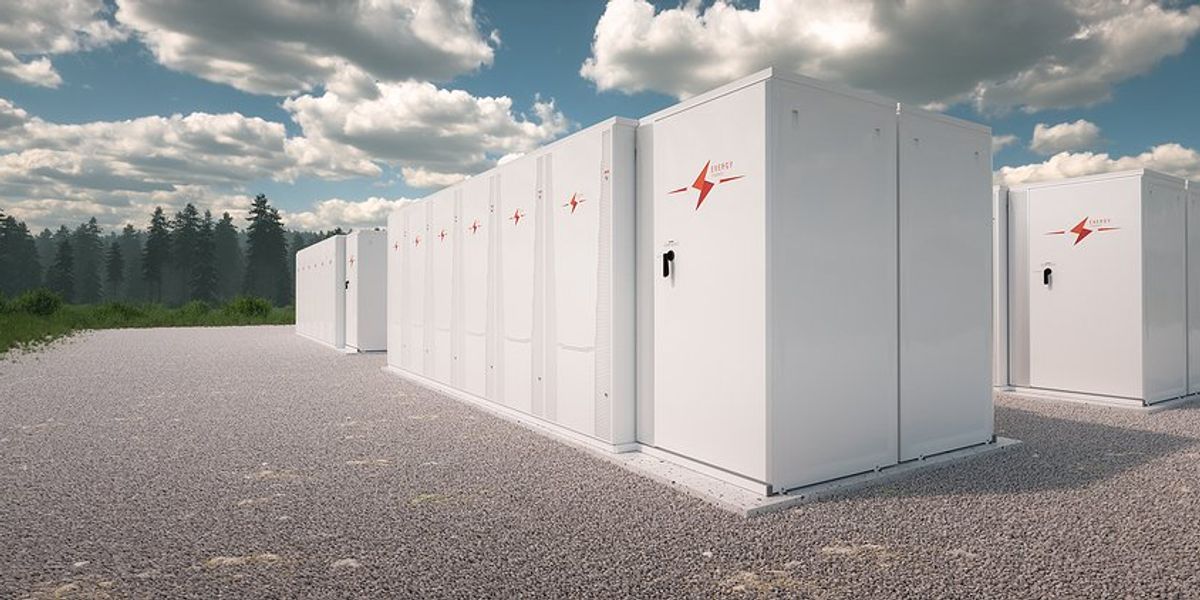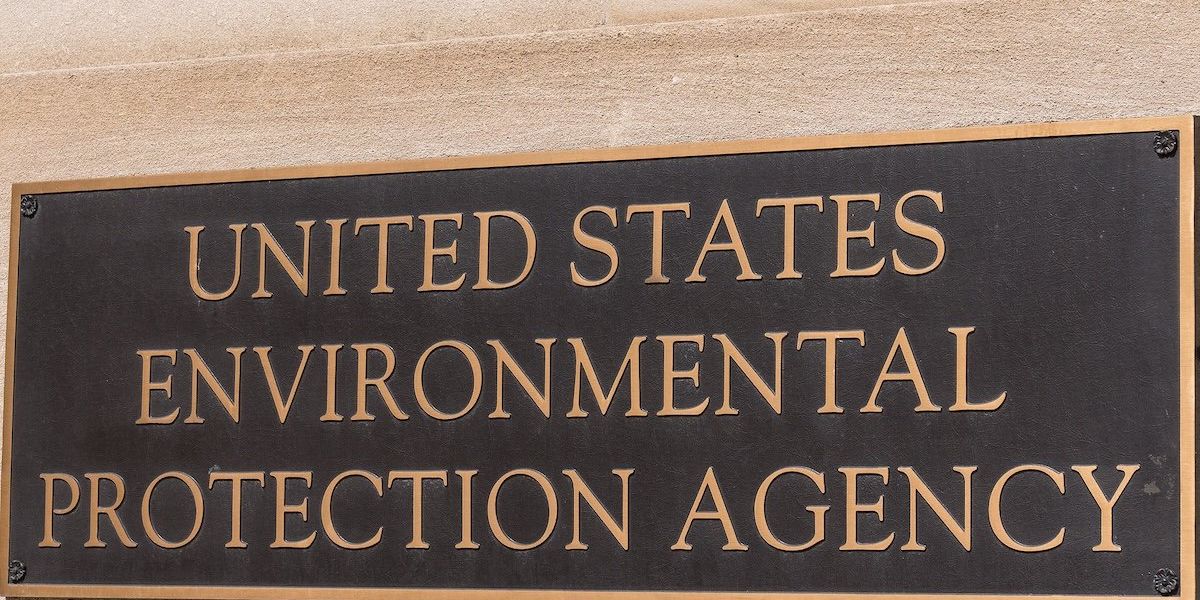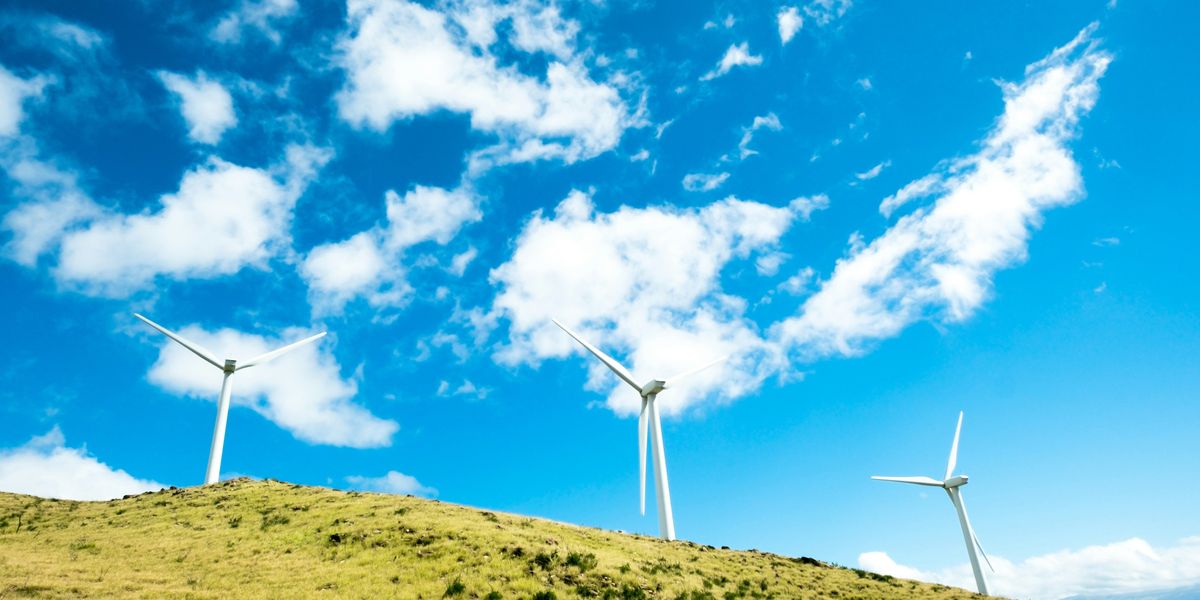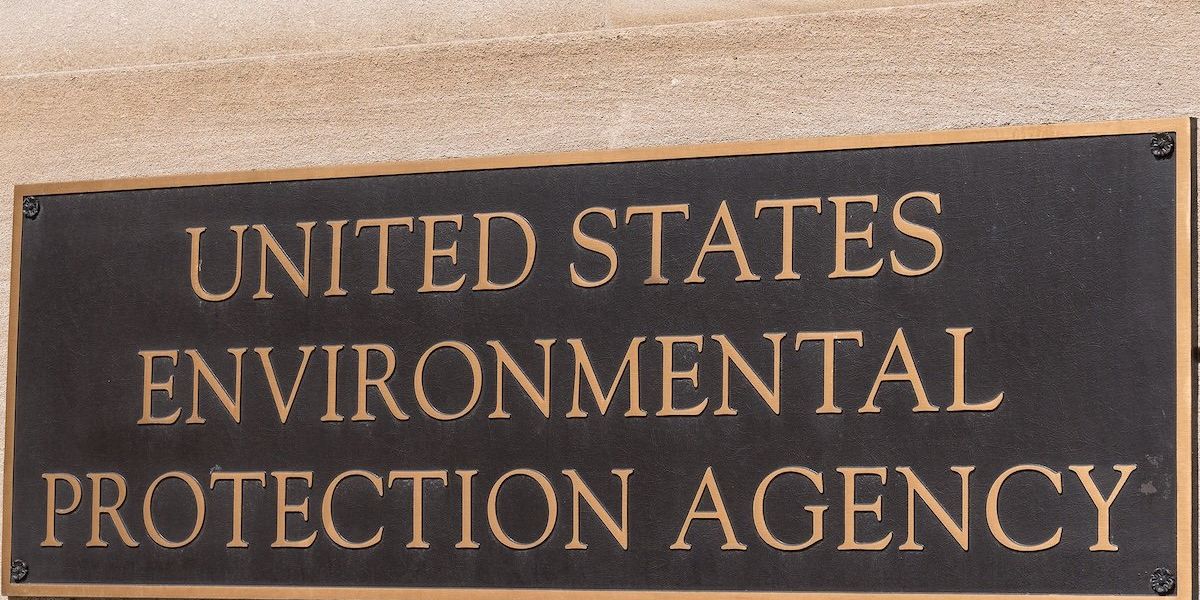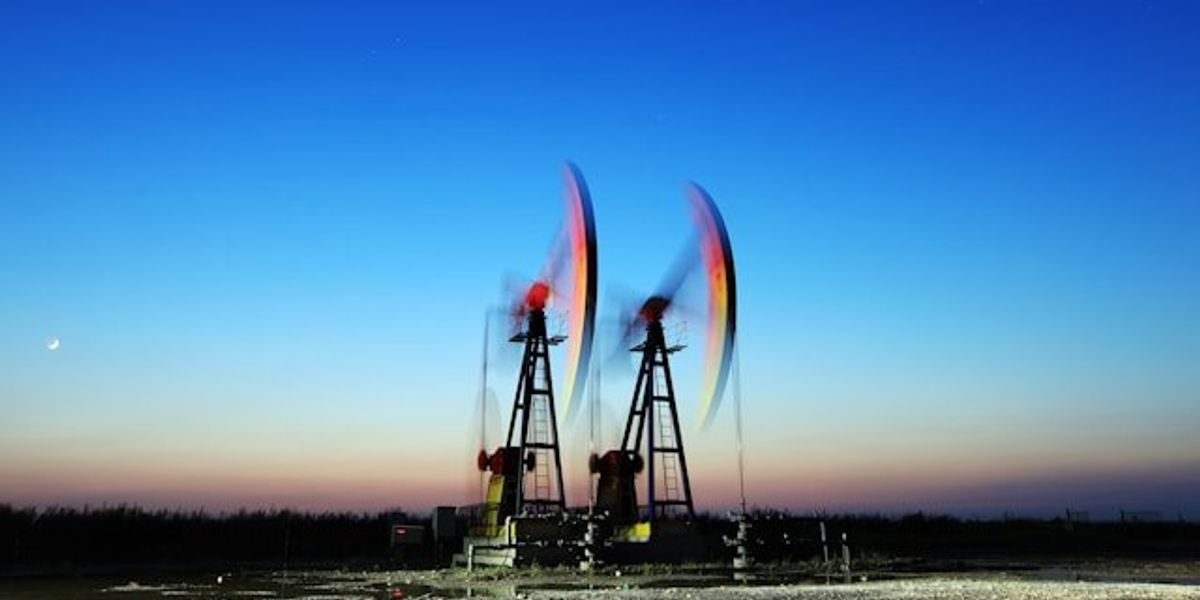pesticide use
Trouble in the tropics: The terrestrial insects of Brazil are in decline
Northwest Territories fined for destroying nests of at-risk bank swallows
The government pleaded guilty to one charge under Canada's species at risk act.
Environmentalists unimpressed by Ontario plan to expand fines for polluters
Protect our species
As marijuana industry explodes, some shift focus to water conservation.
No one yet knows how big the legalized recreational marijuana business will become. But as it grows, water consumption is sure to become a concern in the arid West.
MARIJUANA IS BECOMING big business around the West as more states legalize the plant’s cultivation for recreational purposes. California’s entry into the field, which becomes official on January 1, is certain to bring an explosion of cannabis-related commerce simply because of the size of its market.
All this poses a vital question: How much will marijuana tax the West’s water supplies?
No one knows the answer to that yet, but some in the industry are already working diligently to slash marijuana’s water footprint. Marijuana is known to be a thirsty crop, but much of that depends on how it’s grown.
To get a feel for this landscape, Water Deeply recently interviewed Brandy Keen, co-founder and senior technical adviser at Surna. The company, based in Boulder, Colorado, makes and distributes water-efficient indoor cultivation equipment and serves as a consultant to growers who want to manage their resource consumption and expenses.
Keen got into the business when she and her husband, an epileptic, discovered that marijuana helped manage his seizures and eliminated his need for conventional medication. In September, Keen was a featured speaker on water and energy conservation at the Cannabis World Congress and Business Expo, held in Los Angeles.
Water Deeply: How much water does marijuana use?
Brandy Keen: It’s pretty water-intensive. It uses a lot of water in comparison to other crops. But what’s really interesting is that cannabis is grown in a controlled environment far more often than agricultural food crops. And when you cultivate in a controlled environment, you can dramatically reduce waste [such as] runoff associated with growing in fields, for instance.
In California, a lot of folks are still growing their marijuana plants outside, but they’re growing them in pots in an effort to conserve water. But they may still have a bunch of evaporation out of their pots that the plants aren’t actually using. We can reduce that with cannabis through creative irrigation and reducing the amount of evaporation by not overwatering. That compares to a hydroponic system, where I irrigate and then store that water, and it’s not evaporating.
But the most interesting thing you can do is use reclaimed condensate. No plant consumes water. Plants borrow water. They use water as a delivery mechanism for nutrients, then they transpire that water back out into the space. So when you grow in an open-air greenhouse or outdoors, all the water your plant transpires is evaporated. It just ends up back in the atmosphere.
When I grow in a controlled environment where I dehumidify that space, now I can actually recapture all that condensate. That’s water I gave my plant, and I can just condense it back out of the air and reuse it. It’s basically like you’re producing distilled water. You just add more nutrients to it and give it right back to the plant. I can actually make this a net-zero water consumption process.
Water Deeply: How common is the use of reclaimed condensate?
Keen: It’s increasingly common. In some areas reclaimed water is accepted for some kinds of agricultural use, but not accepted for cannabis yet, for whatever reason. Denver right now is actually looking at its regulations, and it looks like they’re going to change it so the city of Denver will allow you to use reclaimed condensate.
Water Deeply: What does it involve mechanically?
Keen: In a controlled growing environment, you have condensate piping from cooling and dehumidifying systems already. You already are putting in the piping that puts that condensate down the drain or outside. So I just build a tank to hold it instead. It’s not any more expensive from an infrastructure standpoint, except for the cost of the tank. Then you need a filtration system for the condensate, which is going to be a couple thousand dollars.
Water Deeply: Presumably there’s a saving on the water bill as well.
Keen: Oh yes. If I can reduce my water consumption – even if it’s just by half – that’s a big deal. Keep in mind, most cultivation facilities incorporate some kind of reverse osmosis system on their municipal water supply anyway. And they do that because in order to accurately measure the nutrients I’m adding back into the water, I’ve got to start with low concentrations in the water. Reverse osmosis produces some parts clean water and some parts of extremely dirty water as a waste product. That means for every gallon I save through reclaimed condensate, I’m actually saving two gallons. And as that one gallon is continually reused, it eventually saves me six gallons of municipal supply.
But energy is the big cost component right now. Water is a pretty small consideration. It just doesn’t cost that much to get water. If water was as expensive as energy – well, then we’d be having a different conversation today. That being said, it’s so cheap and so easy to reclaim condensate, and drop my water consumption 70 to 80 percent, there’s absolutely no reason not to do it.
Water Deeply: What factors affect marijuana’s water consumption?
Keen: What we see most commonly is actually a calculation based on how much light density is in the space. So the type of light the cultivator selects and the intensity of that light is what drives the transpiration from the plant. And how quickly it’s transpiring tells you how much more [water] it needs to uptake.
We like to drive as much transpiration as possible because that means we’re getting as much yield from the plant as we can. But water and nutrient consumption and photosynthesis are all really closely interrelated. So every time I change one of those things, they all change. If I switch to a lower-intensity bulb, I’m going to be adjusting other things to get my plant to consume as much water as it can.
We typically see watering ranges of somewhere between 3 and 5 gallons [11-19 liters] per day per kW of light – not per plant – in the building. And generally speaking, in a growing operation you have between 0.6 kW and 1 kW for every 25 square ft [2 square meters] of plant canopy.
Water Deeply: What else can be done to reduce water consumption?
Keen: People are doing things like reducing the evaporation of water outside of what your plant is transpiring: not having open tubs of water laying around, covering your pots so that water that would be evaporating out of the pot is contained so your plant can actually drink it.
That has the added benefit of helping you control your environment. Humidity is a huge problem in cultivation facilities. When I’ve got a bunch of water evaporating in a room, now I’m using a whole bunch of energy to dehumidify water that’s not even being used by my plants.
Water Deeply: Are growers interested in saving water?
Keen: Absolutely. We have a multi-pronged reason for doing this. One is obviously the cost of cultivation. Everyone’s always going to be looking at the competition and how to cultivate at a lower price point. Is the cost of water their biggest consideration? No. Overall, water is pretty inexpensive. But it’s still a consideration. So that’s one driver.
The other is, as I like to put it, the ability to do good and do well. We all understand we have to be stewards of this planet. Anything we can do to reduce the resource intensive cultivation of anything, we should be doing it. It takes energy to move that water and treat it. So I think the industry in general wants to do better, wants to be more efficient, wants to do these things that are better for our planet. Whether it’s out of complete altruism, whether it’s out of a marketing competitiveness to say, “We’re a water-wise business,” or whether it’s simple mathematics around how I can make this less expensive to do.
Water Deeply: Do marijuana consumers care how much water their weed uses?
Keen: I don’t think so. But I think in certain markets, they’re going to be really receptive to the marketing component. If the grower can say “We are focusing on energy conservation and water conservation,” I think there are certain buyers who would be influenced by that. Folks in more progressive markets, like California, or areas where brownouts and droughts are really common, people are a lot more focused on this kind of thing than they would be in states like Texas, where climate change doesn’t exist. I’m from Texas, by the way, so I can say that.
So, certainly I think it will start to matter to the consumer. But it’s the industry itself that has to start talking about it.
Water Deeply: What’s the growth potential of this industry?
Keen: The sky is the limit. California and Canada are a huge focus for our company because of the marketing potential there. There are estimates that California alone is going to triple the size of the regulated cannabis market just by itself. So it’s game-changing for the industry.
And it’s a really positive thing, too, that we’re regulating it. Because now we can actually get this information out there [about saving water]. Historically, the industry has had all these underground facilities, and everybody was kind of guessing at what they were doing, because nobody knew where they were, nobody was regulating pesticide use or water consumptive activities.
But I’ve already seen, in some of the cities down in the desert, where they’ve actually had to tell people, “we can’t provide you that many acre-feet of water because the city just can’t even get that much water.” If we go in and reclaim all our condensate, and suddenly that’s 70 percent less water – well, guess what? Suddenly we can build there. If we can figure out a way to make sure we are using water mindfully – well, then we’ve got a completely different opportunity there.
Saving the ocean one outfit at a time.
The sea suffers for fashion. Kombucha leather and leased jeans to the rescue.
Around the world, people buy about 80 billion new garments a year, and Americans alone throw out 15 million tonnes of clothing. Global fast-fashion companies are having a heyday, with Zara owner Inditex and Swedish giant H&M; posting massive sales and regularly ranking on Forbes’s list of most-profitable fashion companies. Clothes have never been cheaper, and anyone can look like an Instagram fashionista or a GQ model for the cost of a couple of medium pizzas.
But this disposable fahion is the result of a global supply chain that hides the true cost of garments. While many companies tout their environmental responsibility, follow their supply chains far enough and you’ll find a labyrinth of independent mills and factories where fabric is woven, dyed, and sewn under sometimes-abysmal conditions. As a rule, fashion companies don’t own these factories, and may not even have direct contact with them, limiting their influence. Above all, these supply chains are nimble. If labor or environmental regulations tighten up in one place, as happened in Cambodia in 2017, buyers may just shift to a cheaper, more competitive locale.
Here at Hakai Magazine, we’re taking a closer look at the impacts of fast fashion on our oceans and rivers. It turns out that a few keystone materials in those fall lookbooks spell particular trouble for the coast.
Cotton
Over a garbled Skype connection, Shafiq Ahmad speaks of a time when people could drink the groundwater near his home in Pakistan. “But now we can’t use it,” Ahmad says. The water is unsafe, and the culprit, he says, is runoff from crops contaminated with pesticides. One of those crops is cotton, which can be found in a large proportion of fast-fashion garments.
Ahmad is Pakistan’s country manager for the Better Cotton Initiative (BCI), an NGO that works with farmers on the ground to fix some of the environmental issues related to cotton agriculture. One major issue is the impact the crop can have on the region’s water.
Textiles and cotton farming are big industries in Pakistan. The country is the world’s fourth-largest cotton producer after China, India, and the United States. Pakistan’s cotton crop consumes close to 20 trillion liters of water—equivalent to the capacity of more than eight million Olympic swimming pools—every year from the country’s lifeblood, the Indus River.
And the Indus is in trouble.
The river is born in the glaciers that cloak the mountain ranges north of Pakistan, the Himalayas and the Karakoram. From there it flows southward into Pakistan, where barrages and dams capture the precious water and divert it into tributaries and canals heading toward communities and farms. A staggering 75 percent of the Indus River’s water goes to canals for farming. By the time the river reaches its delta, it’s barely a trickle.
When the first industrial-scale dams were opened on the Indus in the mid-20th century, they sharply reduced the flow of water and sediment that continually replenished the Indus’s huge delta. Deprived of material, the sea began eroding the delta, up to 12 square kilometers per year since 1944. Salty water has pushed dozens of kilometers inland. Farmers and fishermen in the once-lush delta have witnessed the consequences of the sea’s incursion—the disappearance of the mangroves and freshwater fisheries that rely on mangroves for habitat. Meanwhile, climate change shrinks the Himalayan glaciers that supply the Indus, and increases the frequency and severity of drought in Pakistan.
The “water wars” hypothesis appears not so farfetched. As fresh water becomes scarcer around the world, it will become more precious and conflict over it will lead to violence, much as valuable oil contributed to conflicts such as the Gulf War. Cotton is far from the sole cause of the Indus’s woes. But it does need a lot of water and it’s become deeply interwoven with Pakistan’s economy, with hundreds of thousands of people relying on cotton and textiles for a living.
Ahmad explains that one solution is to rethink Pakistan’s irrigation infrastructure. With open canals instead of closed conduits, about half of the water flowing from catchments to farms makes it to the farmer. The rest is lost to evaporation. And in farms without modern irrigation infrastructure, irrigation means just flooding the field, which increases evaporation and contaminated runoff.
BCI’s farmers now grow 12 percent of the world’s cotton. They say they have reduced water use in Pakistan by 21 percent and pesticide use by 17 percent, and increased profits by 37 percent. BCI also works in the largest cotton producing countries, China and India, but neither these two countries nor the United States is facing as dire a water management situation as Pakistan.
“The biggest challenge for us is governance of water and distribution of water,” Ahmad says, adding that the river is misused by many parties. Those who are allocated a lot of water from the catchment basins and canals often waste it; if farmers then find themselves without enough water, they may pump more illegally from the ground, lowering the already polluted water table. Pumping a water source dry for cotton has precedent: north of Pakistan, the Aral Sea—drained for irrigation during the Soviet era—stands as witness that even the largest fresh watersheds can be mismanaged to decimation.
Leather
In North America, people often own more leather than they realize or care to admit. Closets are typically stuffed with footwear, from Blundstones and Birkenstocks to Keens, Adidas, and Doc Martens. In the United States alone, consumers spend nearly US $30-billion annually on footwear, and that figure doesn’t include what families dish out each year for many other leather goods, including handbags, gloves, and jackets.
All these purchases drive a global leather industry with tentacle-like supply chains that many of us rarely think about. Between 2012 and 2014 alone, the world’s manufacturers produced nearly 1.8 billion square meters of lightweight leather (both bovine and sheep leathers) for the fashion industry, almost enough to blanket the Hawai‘ian island of Maui. Much of this fine leather came from small tanneries in developing countries, where labor costs are rock bottom, and environmental and workplace health regulations are often poorly enforced. So what’s the true cost of our love of fashionable leather?
Look at Bangladesh, a land of meandering rivers and tropical floodplains along the Bay of Bengal. In 2016, more than 200 tanneries vied for space in a teeming industrial quarter in the capital city of Dhaka, along the floodplain of the Buriganga River. To transform perishable animal skin into durable leather, factory workers soaked animal hides in a series of toxic baths containing nearly 40 different acids and several heavy metals including chromium, a known carcinogen. The hides absorbed just 20 percent of these chemical brews: the rest was waste. In all, Dhaka’s tanneries discharged nearly 22,000 cubic liters of toxic effluent daily into the Buriganga River, which ultimately flows into the Bay of Bengal.
Under this chemical onslaught, the Buriganga River is dead. The water smells like rotten eggs and is devoid of oxygen, Imamul Huq, an environmental scientist and vice chancellor of the University of Barisal in Bangladesh, notes in an email. “No aquatic life exists in the river,” Huq adds. (In addition, a 2016 study reports that more than 200 kilometers away, some ocean shores in eastern Bangladesh are now polluted with heavy metals from tanneries and other industries in the Chittagong region.) Faced with an environmental disaster along the floodplain of the Buriganga River, the Bangladeshi government forced Dhaka’s leather factories to move to a new industrial park in 2017, and it has promised to install an effluent treatment plant there. But the opening of the plant was delayed, and in February, residents raised fears that the transplanted tanneries were contaminating a second river, the Dhaleshwari.
Other developing countries face similar problems. In China, untreated tannery wastewater has poisoned the Hutuo River, turning it into a channel of toxic sludge. And in the Philippines, tannery effluent and other industrial wastewater discharged into the Marilao River has contaminated some shellfish beds in Manila Bay.
There’s plenty of incentive to produce a more river- and ocean-friendly leather. In Bangladesh, engineers are test driving technologies for reducing water consumption and chromium use in tanneries. Others are looking for sustainable alternatives to leather. Some fashion companies offer goods made from “vegan leather,” a synthetic mainly composed of polyurethane (PU) or polyvinyl chloride (PVC). No animals are slaughtered to produce this synthetic leather, but PU and PVC come with their own serious health and environmental problems. PU and PVC factories often use a solvent known as dimethylformamide—a carcinogen that exposes workers to increased risk of testicular and oral cavity cancer. In addition, studies show that PVC leaches dioxins in landfill sites.
So researchers are now searching for cleaner alternatives. In New Jersey, scientists at the American firm Modern Meadow are attempting to mass produce collagen—the protein in animal skin—from living cells, so they can biofabricate leather for the fashion industry without killing any animals. Elsewhere, research teams are experimentally producing a form of leather from a popular drink stocked in many grocery stores—kombucha.
Kombucha is made by stirring sugar, bacteria, and yeast into black or green tea: as the mixture ferments, it forms long fibers of cellulose. In Australia, Alice Payne, a lecturer in fashion at Queensland University of Technology, and her colleagues and students have experimentally cultured kombucha leather and designed fashionable apparel from it. By allowing the kombucha mixture to ferment for two to three weeks, the Australian researchers created a pliable skin-like membrane 10 millimeters thick that looked a little like tofu. It was slimy, but it had the texture of leather. Once the team members washed, oiled, dried, and sealed the material, they fashioned handbags, clothing, and footwear from it. The “shoe styles vary from casual slip-ons to more conceptual designs with handmade wooden heels and soles,” Payne and her colleagues noted in a 2016 paper.
But kombucha leather isn’t ready for the fashion industry. “Growing a consistent piece is difficult,” notes Payne in an email. And kombucha leather, she adds, is less durable than animal leather. To encourage other innovators to help solve the problems and pave the way to commercialization, Payne and her colleagues have posted online simple instructions for making this sustainable material. In decades to come, kombucha leather could be a promising alternative to animal hides. HP
Denim
What looks more comfortable, down to earth, and innocuous than a pair of well-worn jeans? With their traditional design and 19th century watch pocket, blue jeans seem to come from an earlier, simpler time. But the blue jean industry has become something of an environmental battleground today. Jean factories frequently produce the trademark blue color by soaking cotton a dozen or so times in giant vats containing a synthetic indigo dye often produced from fossil fuels. And the artfully faded look, misleadingly known as stonewash? It comes from workers blasting the fabric with silica or stripping the dye with toxic chemicals rich in heavy metals.
Like tanneries, denim factories are often located in the developing world—out of sight, and out of mind of Western consumers. One of the world’s biggest producers of denim is a gritty looking city in China’s Pearl River Delta—Xintang. According to one 2016 study, Xintang’s factory workers produce a whopping 200 million pairs of jeans a year, but they and their neighbors pay a steep price for the industry.
The local river has turned a strange black color from the dumping of untreated dye water from the factories. And scraps of denim and other factory sludge rot along riverbanks. In 2010, Greenpeace researchers conducted a study in Xintang and neighboring Gurao, sampling water and sediments from the river. Nearly 80 percent of the samples were contaminated with heavy metals. One sample contained a level of cadmium, a heavy metal toxic to humans and aquatic life, that was 128 times greater than the limit set by the Chinese government. “Not only are the substances in the wastewater poisoning aquatic systems and depleting fish stocks,” writes Kim Hiller Connell, an environmental scientist at Kansas State University, in a 2015 book chapter, Xintang’s jean factories are dumping their effluent “into water utilized by millions of people.”
Today, research teams are working on new dying technologies that use much less water: one such system alters the molecular structure of cotton fibers so they absorb dye more readily. This reduces the use of water by 90 percent. But some fashion designers aren’t waiting for scientific fixes. Mud Jeans, for example, is going the sharing economy route, with its Lease A Jeans program. In this model, the consumer rents a pair of Mud jeans by paying a one-time €20 (US $24) membership fee and a monthly fee of €7.50 for 12 months: any time after that, the buyer can send back the old jeans and lease a new pair, paying the same monthly fee. Meanwhile the company recycles the worn-out jeans: workers cut them into pieces, mechanically extract the fibers, and produce new articles of clothing.
“This is moving in the right direction—leasing, repairing, lending,” says Kirsten Brodde, who leads the Detox My Fashion campaign for Greenpeace Germany. “All these small companies are paving the way. They are the business models for tomorrow.” HP
Plastics
By the time we thought to look, they were everywhere. Tiny squiggles of plastic, almost too small to detect with the naked eye. These plastic microfibers are scattered throughout the ocean, from the surface to the bottom and everywhere in between. When washed, synthetic garments such as acrylic, polyester, and fleece shed microfibers, which end up in the ocean through wastewater discharge. Indeed, of all the microplastics that wash up on coastlines around the world, more than 85 percent are fibers, outnumbering other types such as microbeads from cosmetics or shards broken down from larger plastic pieces. So, how bad are they?
Unlike plastic bags or bottle caps, quantifying what these ubiquitous fibers do to marine fauna is tricky. “In the real world, it’s impossible to see if it’s causing harm,” says Peter Ross, director of the Ocean Pollution Research Program at Ocean Wise Conservation Association.
According to Ross, it’s also unclear how much harm microfibers would do to a human who ingests them. But lab tests show how these fibers can be a serious problem at the lower end of the ocean’s food chain.
“We know plastics create blockages and suffocate large animals,” Ross says. He thinks the same could be happening to little marine organisms. Research from 2013 on copepods—a kind of zooplankton—exposed to microplastic beads found that the plastic stuck to the animals, and when they ate the plastic, it obstructed their guts making it difficult to eat anything else. This supports the idea that microplastics may choke zooplankton. Microfibers could then work their way up the food chain, as larger animals gobble up the plastic-stuffed zooplankton.
Marine biologist and Hakai Institute researcher Sarah Dudas says oysters on Vancouver Island, British Columbia, are already harboring microplastics. They can filter them out within about five days, but only after they are exposed to a continuous stream of super-clean seawater, which is unrealistic in today’s ocean. Microfiber impacts are more than physical, they’re chemical, too. Like any other plastic, they can leach their composite chemicals into animals that have eaten them. And other pollutants can stick to plastic microfibers and poison animals too, though this has not been well studied. But any effort to get rid of them requires knowing where the fibers are coming from, a difficult proposition. Once they are swirling about in the ocean, there’s no way to tell what city, or type of garment, was the point of origin.
To find out, Ross is washing clothing with known components in standard washing machines, and then categorizing the chemical and physical signatures of the fibers. He hopes to create a library of fibers, from acrylics to polyester. Then Ross and his colleagues could test ocean water samples from around the world and measure their chemical signatures against the database to determine where the fibers came from. If a lot of microplastics of a certain kind appears in one place, for example, efforts to stop the source can be focused and, hopefully, effective.
Ross is partnering with Metro Vancouver and outdoor apparel companies MEC and REI to do this. Outdoor clothing is a big source of synthetic fibers. Yet while high-end apparel companies have an incentive to market better products to green-minded consumers, that’s not true of lower-end companies that focus on selling high quantities at low prices. The volume of microfibers washing onto shores, and finding their way into animals, including humans, may be high for a while yet. AK
Is climate-themed fiction all too real? We asked the experts.
Some works of apocalyptic fiction are starting to feel too close for comfort. We chose seven of them and asked: How likely are they to come true?
CLIMATE
Is Climate-Themed Fiction All Too Real? We Asked the Experts
By LIVIA ALBECK-RIPKA SEPT. 26, 2017
Photo
Credit Illustration by Jordin Isip
When extraordinary hurricanes and floods battered parts of the United States and Caribbean this month, Paolo Bacigalupi’s readers started sending him news clips. In “Ship Breaker,” which was nominated for a National Book Award in 2010, Mr. Bacigalupi, a science fiction writer, had invented a monster “Category 6” hurricane.
Now, his readers were asking: Is this what you were talking about?
Climate change presents a peculiar challenge to novelists; it often seems to simmer without a singular moment of crisis. So fiction writers like Mr. Bacigalupi hurtle current science into drought-ravaged, flooded, starved, sunken and sandy futures. Climate-themed fiction, like most science fiction, is extension, not invention.
But as scientists’ projections about the effects of climate change have increasingly become reality, some works of apocalyptic fiction have begun to seem all too plausible. We chose seven climate-themed stories and asked the experts: How likely are they to come true?
Photo
CLIMATE EFFECT: WATER WARS
‘The Water Knife’
by Paolo Bacigalupi
In his fifth climate-related book, published in 2015, Mr. Bacigalupi asks: What would happen if drought became the “new normal” in the American Southwest? His answer: Refugees, apocalyptic cults and drug dealers roam a land where water is controlled by thugs.
“What if our underlying prosperity is ripped out from underneath us?” Mr. Bacigalupi said. “If you put those questions in people’s mind, it changes how they look at their daily life.”
Leon Szeptycki, an attorney and professor specializing in water rights at the Stanford Woods Institute for the Environment, described the book as fictional extension. “Climate change will cause a lot of social and economic disruption in the American Southwest, but not at the level the author envisions,” he said.
Eighty to 90 percent of water in the Southwest is used for agriculture, so rural communities would be hit first by shortages, Mr. Szeptycki said. “Available water will shift to cities,” he said. “There will be less water, less food, fewer jobs.”
Photo
CLIMATE EFFECT: DESERTIFICATION
‘Gold Fame Citrus’
by Claire Vaye Watkins
Claire Vaye Watkins’s 2016 novel, her first, imagines drought differently. Sand has swallowed California; now it’s known as the Amargosa Dune Sea. Nothing grows in the lawless desert, but a wandering dowser claims that new species — a diurnal owl, carnivorous plants and albino hummingbirds — have emerged through a “super-speed evolutionary time warp.”
“Absolutely, climate change can accelerate evolution,” said Jeffrey Townsend, a professor of evolutionary biology at Yale. Humans have set off many evolutionary changes, like when insects have adapted to pesticides or when the peppered moth lost its spots to more closely resemble industrial soot. Plants becoming meat eaters would be more of a stretch, Dr. Townsend said.
The novel is “not an unreasonable fictional depiction” of drought, said Noah Diffenbaugh, a professor of earth system science at Stanford. California already has a “new climate,” he added. Anthropogenic warming has increased the state’s drought risk, but permanent rainlessness remains unlikely.
“That’s probably where the scientific literature and the novel diverge,” Dr. Diffenbaugh said. “Humans are able to probe these issues in ways that are different through the lens of fiction.”
Photo
CLIMATE EFFECT: SPECIES EXTINCTION
‘Flight Behavior’
by Barbara Kingsolver
The central character in Barbara Kingsolver’s 2015 novel doesn’t believe in climate change until she has a “vision of glory” — a colony of monarch butterflies from Mexico appears in southern Appalachia, disoriented by warming temperatures.
“I think it could happen, but pretty far into the distant future when global warming really has an effect further north,” said Lincoln Brower, a research professor of biology at Sweet Briar College, whom Ms. Kingsolver consulted while writing the book.
Dr. Brower, who has been studying the death of monarch butterflies for six decades, said their numbers were already “way down” because of a combination of pesticide use, logging and the impacts of climate change. But he guessed it would take about half a century before temperatures in Appalachia rose enough to accommodate the butterflies during their winter migration.
“It’s hard to know what’s going to happen,” Dr. Brower said, “but I don’t think it will be good.”
Photo
CLIMATE EFFECT: DISRUPTED FOOD CHAIN
‘The History of Bees’
by Maja Lunde
China, 2098: Tao is up a tree, hand-pollinating its blossoms with a tiny brush. The bees are long since gone. Maja Lunde’s first book, published in 2017, chronicles three generations as they exploit, try to save and eventually mimic bees, whose extinction has become a familiar device in climate-themed fiction.
“It’s a crazy idea, and it’s being done,” said Jeremy Kerr, a biodiversity researcher at the University of Ottawa, describing the hand-pollinators of Hanyuan County in China’s Sichuan Province.
Pollinators like bees (and birds, butterflies, moths, flies, wasps, beetles, bats and mosquitoes) are crucial to the food chain because they move pollen between fruit, vegetables and nuts. Plants that depend on pollination are 35 percent of global crop production. While Colony Collapse Disorder — previously believed to pose a major threat to all bees — has declined substantially in recent years, Dr. Kerr said it was conceivable that five or six “keystone” species, which pollinate crops like canola, tomatoes, blueberries and strawberries, could be lost, in part because of global warming.
But hand-pollination? “The question of whether you could do something like that on a planetary scale,” Dr. Kerr said, “Holy moly, if that’s where we got to, I think other things would probably kill us first.”
Photo
CLIMATE EFFECT: REFUGEES
‘Borne’
by Jeff VanderMeer
In Jeff VanderMeer’s 2017 novel, rising waters force a child named Rachel to flee her island home, so she moves “from camp to camp, country to country,” hoping that she “could outrun the unraveling of the world.” Later, in a nameless ruined city, the 28-year-old Rachel befriends an amorphous creature, Borne, who smells like brine and reminds her of the sea animals of her childhood.
Extreme weather events uproot 21.5 million people each year, according to the United Nations refugee agency, and climate change is expected to increase that number. But there is no internationally accepted legal status for people who have been displaced by the impacts of climate change.
“What would be fair,” said Michael Gerrard, director of the Sabin Center for Climate Change Law at Columbia Law School, “would be for each of the major emitting countries to accept a portion of the world’s climate-displaced people proportional to its historic contribution” of greenhouse gases.
Photo
CLIMATE EFFECT: DROWNED CITIES
‘New York: 2140’
by Kim Stanley Robinson
Veering from the dystopic futures common to climate-themed fiction, Kim Stanley Robinson’s 2017 book is what the author calls a “comedy of coping,” set in a Venetian-like half-submerged New York City. Seas have risen 50 feet, making lower Manhattan a low-rent “intertidal” zone; water washes up to 46th Street every 12 hours. New Yorkers commute not by subway, but by vaporetto.
While multi-meter sea level rise in New York City is realistic, the timescale is not, said Benjamin Horton, a professor at Rutgers who focuses on sea level change. He said that current modeling predicted extreme flooding of New York City by around 2300, but that the city would likely protect itself from rising waters with sea walls and other infrastructure.
Mr. Robinson said he had chosen the year 2140 to balance scientific predictions with a plot that could incorporate a transformed economic system.
“Climate change is basically a capitalist catastrophe,” he said. “We have to create post-capitalism to deal with climate change.”
Photo
CLIMATE EFFECT: ADAPTATION
‘The Machine Stops’
by E. M. Forster
Forster’s eerily prescient novella imagines a world where life on earth’s surface — besides ferns and “a little grass” — has become impossible. Humans live underground, where they communicate via glowing blue-lit plates and eat, drink and sleep to the rhythm of the eternally humming “Machine.”
Written in 1909 — just over a decade after the Swedish scientist Svante Arrhenius suggested anthropogenic emissions could change the climate — “The Machine Stops” prophetically described something like the internet. But it was far off in imagining how we would adapt to climate change, said Jonathan Foley, executive director of the California Academy of Sciences.
“The idea that we could have self-sufficient civilization underground basically requires we replace the sun,” Dr. Foley said. “And any technology that’s capable of doing that — whether it be fusion, or some kind of magical technology — would have to be so powerful that I’d ask: Why didn’t we solve the climate problem first?”
Dr. Foley said the novel’s ideas weren’t that far from the science-fiction-like discussions he heard coming from Silicon Valley, where vertical gardens, orbiting microwave transmitters or machines that harvest carbon are touted as silver bullets for climate change. “The actual solutions are far simpler,” he said. “But they’re not as sexy. Like, hey: What if we threw less food away, or we ate less meat?”
Dr. Foley said that if he ever wrote a novel, it would be one in which “we all do the slow, hard muddling work of just pitching in, but no hero rides in on a spaceship to save us all.” It would be a terrible novel, he admitted. “No one would buy it, and Hollywood wouldn’t make a movie, but it’s the one I want, and it would surely save the world.”











